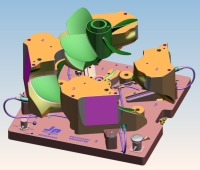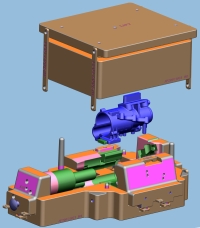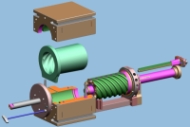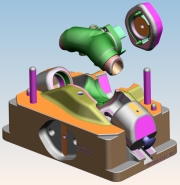Tool Design and Engineering
 Effective
tooling starts with a
comprehensive design approach. A designer must take advantage of
the manufacturing process as well as understand the difficulties
involved.
Effective
tooling starts with a
comprehensive design approach. A designer must take advantage of
the manufacturing process as well as understand the difficulties
involved.
The steps we take at JP
Pattern first targets the CAD model
of the part. By applying the manufacturing process to the part, it
is then transformed into a master model.
 This
master is then used to create
the tooling components necessary for the molding process. To
complete this step, quite often a mastery in CAD is an essential
trait that is needed with even some of the simplest forms of
geometry.
This
master is then used to create
the tooling components necessary for the molding process. To
complete this step, quite often a mastery in CAD is an essential
trait that is needed with even some of the simplest forms of
geometry.
Tool components are
extracted from the master model and
must be shaped to allow for sound function as well as ease of
construction. Components need to interact with each other and be of
 proper
size and proportion to create smooth flow as a mold reaches
each phase of molding process
cycle.
proper
size and proportion to create smooth flow as a mold reaches
each phase of molding process
cycle.
Lastly the design of the
tool
must take into consideration the equipment and environment in which
it will function.
 When
this criteria is met the result is a well functioning
tool that will decrease time, increase product quality
and minimize cost throughout the manufacturing
process.
When
this criteria is met the result is a well functioning
tool that will decrease time, increase product quality
and minimize cost throughout the manufacturing
process.







